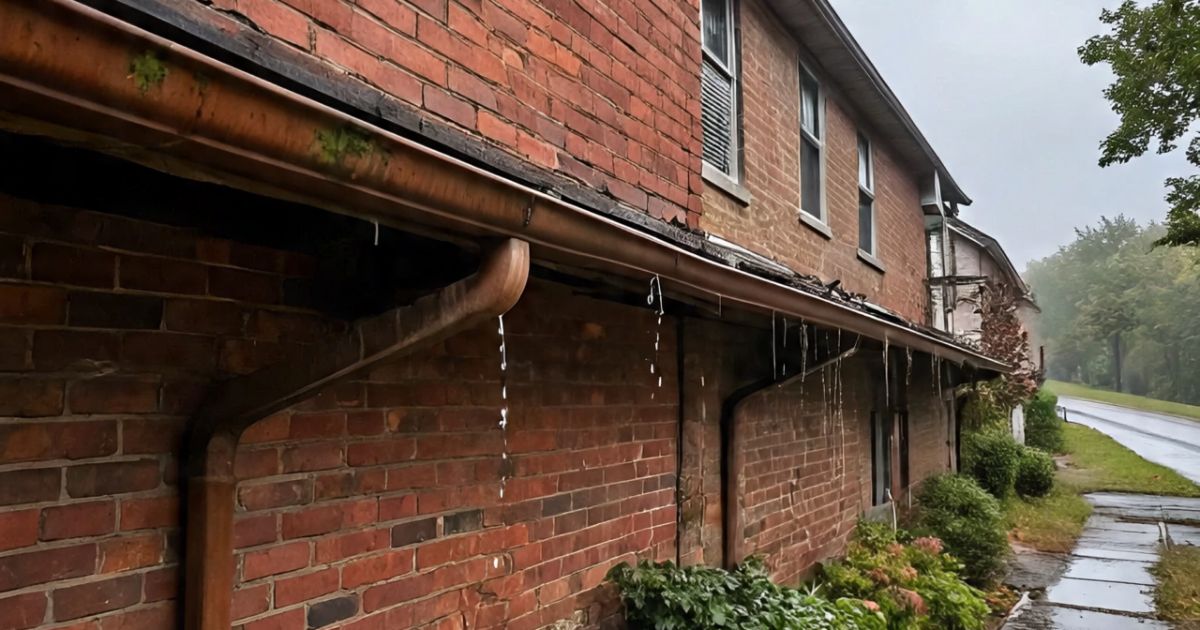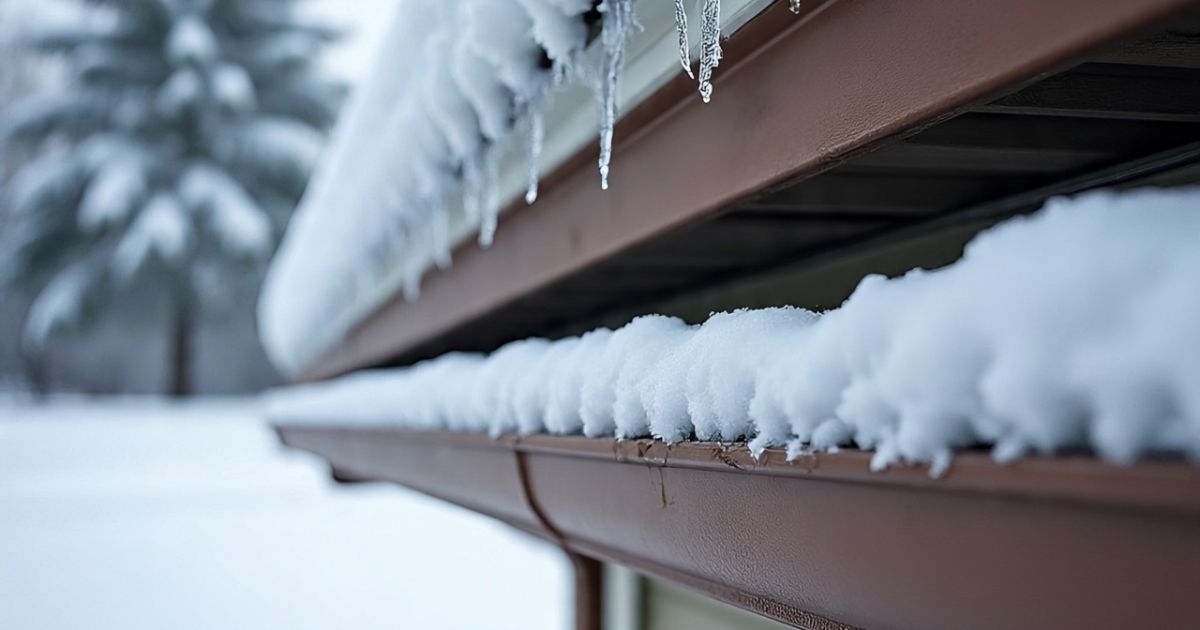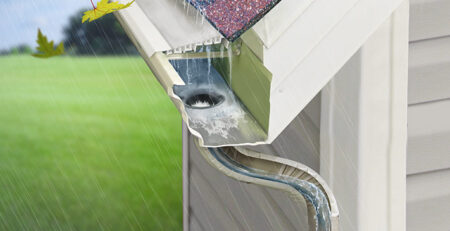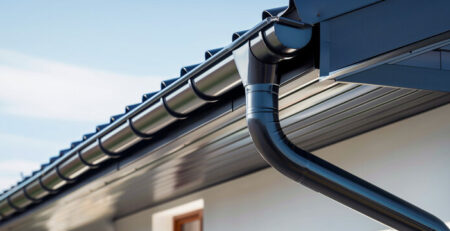8 Common Gutter Issues and Their Solutions
If you’ve ever had water pool around your home’s foundation or seen stains on your siding after a rainstorm, chances are your gutters aren’t doing their job. After 70 years in the roofing business, we can tell you this: gutters are small but mighty. They play a major role in protecting your home, and when they stop working right, problems show up fast.
In this guide, we’ll walk you through some of the most common gutter issues we’ve seen on homes over the years and how to fix them. Whether you’re a new homeowner or just trying to keep your place in good shape, this is everything you need to know.
What do gutters do, and why are they important?

Gutters have one simple job: move rainwater away from your house. When it rains, water rolls off your roof. Without gutters, that water would fall right next to your foundation, soak into the ground, and over time, cause major damage.
Here’s what gutters help prevent:
- Basement flooding
- Foundation cracks
- Rotting fascia boards
- Mold and mildew growth
- Soil erosion around your home
So when someone asks, “What are gutters for?” or “What is the purpose of gutters?” the answer is simple: they protect your home from water damage. That’s why gutters are important, and why keeping them in good shape should be on every homeowner’s checklist.
Why do gutters clog, and how can I prevent it?
The most common gutter problem by far is clogging. Leaves, pine needles, twigs, and even bird nests can block the flow of water.
Signs of clogged gutters:
- Water spilling over the edge during rain
- Sagging or pulling away from the house
- Plant growth in the gutters
- Stains or mildew on siding
Simple solutions:
- Clean your gutters at least twice a year, especially in the spring and fall
- Consider installing gutter guards to block out debris
- Trim tree branches hanging over your roof
At Pro Craft Home Products, we’ve seen how just a few years of neglect can lead to thousands in water damage. Regular maintenance is worth the time.
What causes gutters to sag or pull away from the house?
Sagging gutters usually mean one of two things: either the brackets are loose or the gutters are weighed down with debris and standing water.
Causes of sagging gutters:
- Clogged gutters holding too much weight
- Loose or rusted hangers
- Rotten fascia boards, the gutters are attached to
What you can do:
- Tighten or replace brackets and hangers
- Remove debris and let the gutters dry before reattaching
- Replace any rotted wood behind the gutter
Don’t wait too long on this one. A sagging gutter can pull completely away and cause damage to your roof edge and siding.
Why are my gutters leaking?

Leaky gutters might not seem like a big deal, but they can quietly cause water to seep into your walls or foundation.
Common leak sources:
- Holes from rust or corrosion
- Seams are pulling apart over time
- Cracks caused by freezing and thawing
How to fix gutter leaks:
- Seal small holes and cracks with waterproof gutter sealant
- For larger damage, replace the section of the gutter
- Upgrade to seamless gutters if leaks are recurring
With older homes, it’s common for metal gutters to rust or wear thin. We always recommend checking for leaks every spring.
Why does water pool around my foundation?
If you notice puddles near your home’s base after a storm, your downspouts or gutter slope might be the problem.
Here’s what to look for:
- Downspouts that discharge too close to the house
- Gutters not pitched correctly (they should slope slightly toward the downspouts)
- Settled or sunken soil under the downspout
What helps:
- Extend downspouts at least 3 to 6 feet away from your foundation
- Adjust the gutter pitch to keep water flowing
- Regrade the soil to slope away from the home
This is one of the top reasons homeowners end up needing foundation repairs, and it’s completely avoidable.
What if my gutters overflow even when they’re clean?
If your gutters are clear but still overflowing during rain, you might have an issue with their size or placement.
Possible reasons:
- Gutters are too small for the roof size
- Not enough downspouts to handle heavy rain
- Gutters installed without proper slope
What to do:
- Upgrade to 6-inch gutters if you have a steep or large roof
- Add extra downspouts to improve flow
- Rehang gutters with the right pitch
At Pro Craft Home Products, we often recommend seamless aluminium gutters for modern homes. They handle more water and are less prone to leaks or overflow.
Can ice dams damage my gutters?

Yes, ice dams are a real threat in colder climates. When snow melts and refreezes at the roof edge, it creates a dam. This pushes water back under your shingles and weighs heavily on your gutters.
Prevent ice dams by:
- Adding insulation to your attic to keep heat from escaping
- Making sure your roof is well-ventilated
- Using heated gutter cables in problem areas
Heavy ice can cause gutters to bend or tear right off the house. Prevention is key.
When should I replace my gutters instead of repairing them?
Sometimes repairs just won’t cut it, especially if your gutters are more than 20 years old.
Signs it’s time to replace:
- Multiple leaks or sagging spots
- Rusted or corroded metal
- Peeling paint or water stains on siding
- Gutters are pulling away repeatedly
Upgrading to seamless gutters or a more durable material like aluminium or copper can save you money in the long run.
Final Thoughts
Gutters might not be the most exciting part of your home, but they do a big job. If you’ve ever asked, “Why are gutters important?” now you know: they protect everything from your roof down to your foundation.
Keeping them clean, secure, and properly sloped is the best way to avoid expensive repairs down the road. And if you’re unsure where to start or need help diagnosing a problem, a local expert like ProCraft Home Products can take a look and offer honest advice.
Quick FAQ: Common Gutter Questions
How often should I clean my gutters?
Twice a year, in the spring and fall. More often, if you have lots of trees nearby.
Do gutter guards work?
They can reduce how often you clean, but they aren’t maintenance-free. You’ll still need to check for clogs.
Can I fix sagging gutters myself?
If you’re comfortable on a ladder and the damage is minor, yes. But for widespread sagging, it’s best to call a professional.
What type of gutters last the longest?
Aluminium and copper gutters tend to last the longest with proper care.






Leave a Reply